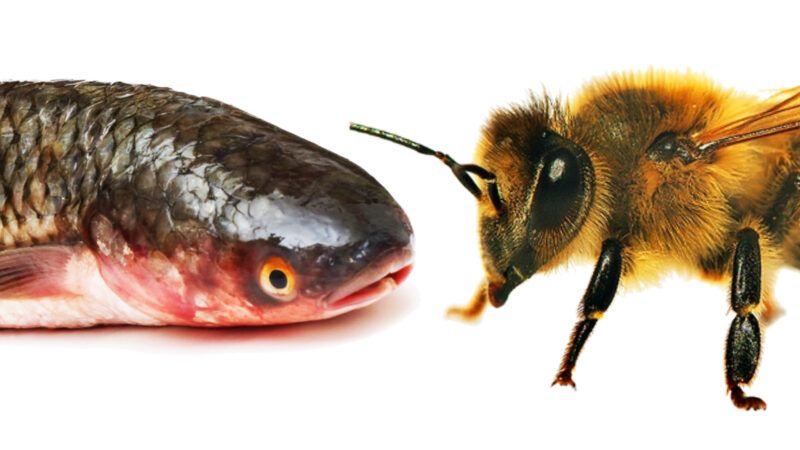California Environmentalists: Bees Are Now Fish
The state's Endangered Species Act doesn't protect insects, so environmentalists and government officials intent on helping bees had to get creative.

For the past few years, government officials and agricultural groups in California have been fighting over the question: Are bees fish?
The California Court of Appeal for the 3rd District ruled on May 31 that, legally, they are.
At the heart of this issue is the state's Endangered Species Act, which prohibits the import, export, possession, purchase, sale, or killing of listed species. Roughly 250 plant and animal species are protected by the California Endangered Species Act (CESA).
In 2018, environmentalists petitioned the California Fish and Game Commission to add four bumblebee species to the list of at-risk plants and animals governed and protected by the CESA. The Commission provided notice in 2019 that the four bumblebee species were candidates for CESA protection.
Birds, mammals, amphibians, reptiles, plants, and fish are categories of endangered species eligible for protection in California, but insects aren't. So how did state officials, at the behest of environmental groups, end up getting those bumblebees added?
By declaring them fish!
Citrus growers, almond producers, and other large agricultural groups in the state that would be affected by the classification quickly filed a lawsuit, but the appeals court agreed with the classification—bees are fish.
So what is a fish? According to the CESA, the word refers to "a wild fish, mollusk, crustacean, invertebrate, amphibian, or part, spawn, or ovum of any of those animals."
The key word there is invertebrate. Because they don't have backbones, the appeals court ruled that bumblebees could reasonably be designated as fish since the word is considered a "term of art," meaning it has a definition within a specific field that diverges from common usage.
"We certainly agree section 45 is ambiguous as to whether the Legislature intended for the definition of fish to apply to purely aquatic species," the court's decision explains. "A fish, as the term is commonly understood in everyday parlance, of course, lives in aquatic environments." Because a snail (a terrestrial invertebrate) was previously listed under the act "and could have qualified as such only within the definition of fish," the court opted to liberally construe the act and the Legislature's intent when drafting it.
A problem with this reasoning is that it "seriously undercuts the idea that law is supposed to be clear and accessible to ordinary people," notes George Mason University law professor Ilya Somin. The average person has a particular understanding of what the word fish means and, when reading the law, "would be hard-pressed to figure out that harming bees is a no-no."
And yet, any farmer who harms or kills one of these protected bees could be punished with fines or have their pesticide permits rescinded. That could prove problematic since farmers will have to distinguish the four protected types of bees from the 21 other bumblebee species that can be found in California.
The court's ruling might also empower activists to further stretch the legal definitions of the CESA as they try to get more critters protected. The California Fish and Game Commission "may list any invertebrate as an endangered or threatened species" if the invertebrate meets the requirements of the relevant statutes, the court ruled.
Ladybugs, scorpions, moths, butterflies. Maybe someday they can be fish, too.
Editing and graphics by Isaac Reese; additional editing by Danielle Thompson
